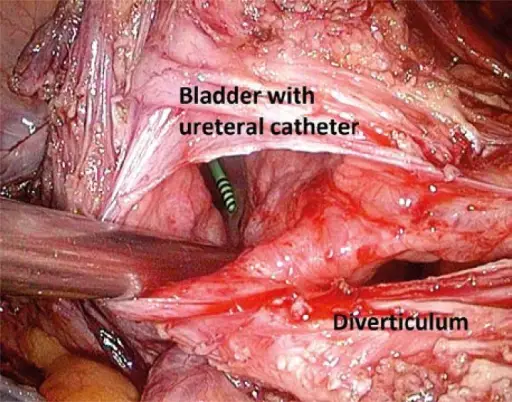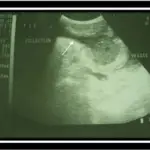Diverticula of the bladder are balloon-like growths on the bladder commonly associated with chronic outflow obstruction, such as benign prostatic hyperplasia in older males. Usually found in pairs on opposite sides of the bladder.
What is the Pathology of Diverticula of the Bladder?
The pathology of diverticula of the bladder is:
-Etiology: The cause of diverticula of the bladder is congenital cases are due to bladder outlet obstruction or failure of muscle development.
-Genes involved: EFEMP1.
-Pathogenesis: The sequence of events that lead to diverticula of the bladder is the raised intracystic pressure by the arrangement of the three interlacing muscle layers.
-Morphology: The morphology associated with diverticula of the bladder shows narrow necks, round / ovoid pouch from 1 – 18 cm (average 5.0 cm).
-Histology: The histology associated with diverticula of the bladder shows wall consists of fibrous tissue with no / scant muscularis propria.
How does Diverticula of the Bladder Present?
Patients with diverticula of the bladder typically affect males 1-80 years of age. The symptoms, features, and clinical findings associated with diverticula of the bladder include the following. Most bladder diverticula are small and asymptomatic. When symptomatic, usually associated with infections and stones (due to urine stasis), urinary retention, or perforation.
How is Diverticula of the Bladder Diagnosed?
Diverticula of the bladder is diagnosed by an x-ray test of the bladder.
How is Diverticula of the Bladder Treated?
Diverticula of the bladder is treated by nonoperative treatment, surgical bladder outlet reduction, or removal of the diverticulum.
What is the Prognosis of Diverticula of the Bladder?
The prognosis of diverticula of the bladder is poor in the case of tumor development.



